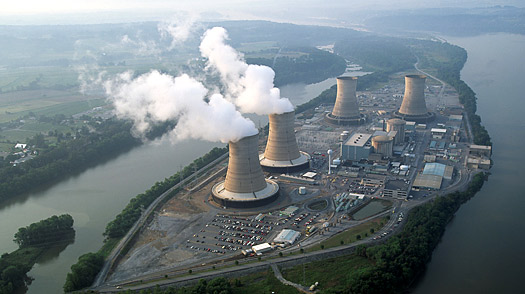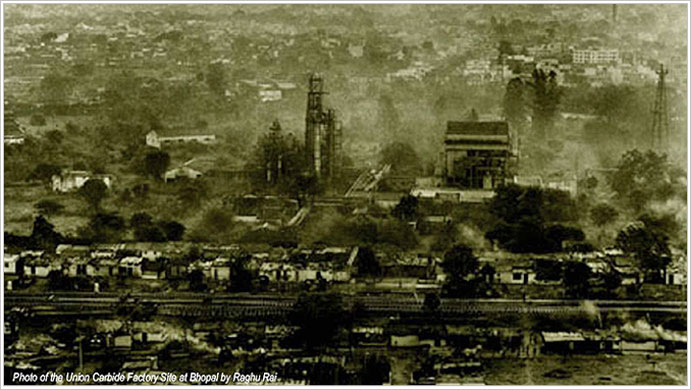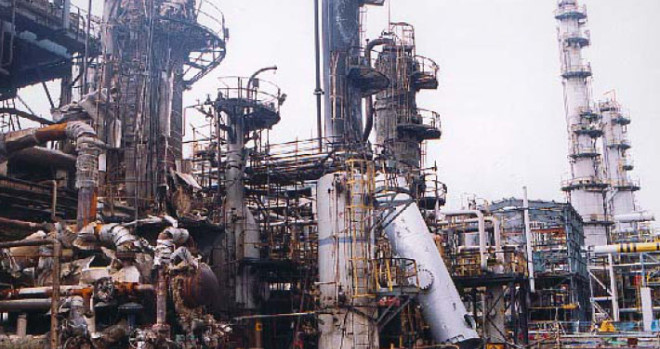The 11 Most Devastating Energy Industrial Disasters of All Time

Most of the following industrial disasters involve either the mining, fractionation, and transport of oil, or the production of nuclear energy using uranium. It’s clear that to prevent accidents like these from happening in the future, we need to abolish these methods, and begin generating energy in completely new ways that do not include oil, or uranium-based nuclear power.
The injuries and loss of life involved in an energy disaster are some of the highest in history and the cost of these accidents can sometimes be phenomenal, the destruction caused can sometimes take many years to clean up or rebuild.
As we all know, free energy technology exists in many forms and it can eliminate these risky and damaging industries from our lives, such as Thorium nuclear power, which is non-pollutant and incredibly safe and abundant. Let us take a look at the history of our use of fossil fuels and unsustainable energy production methods and the devastating environmental impact they have had on our planet.

In this article, we’ve decided to focus more on safety critical Industries like the the Nuclear, Energy/Oil & Gas Industry where there are high integrity Engineering systems, hopefully we would do another list later on aviation, the following devastating accidents are in order by date not according to the rating of the disaster.
TABLE OF CONTENTS
1.Banqiao Dam Disaster (1975)
It was the worst dam disaster in history!
In the Henan Province of China, the Banqiao Dam flooded when Typhoon Nina struck China’s Henan Province in August 1975. Exceptionally heavy rains in the area combined with the dams poor construction caused a break-down of the Banqiao dam which was one of the 62 dams that collapsed. The resulting flash floods killed over 100,000 people immediately and over 150,000 people died from epidemic diseases and starvation. 11 million people lost their homes. It also led to the sudden loss of 18 GW of power, The death toll of this disaster totalled around 250,000. It is counted as the worst technical disaster ever, to date.
2. Amoco Cadiz (March 16, 1978)

Off the northwest coast of France, the Amoco Cadiz sank. It was a very large crude carrier (VLCC) owned by the then company Amoco which has since been merged with BP. When the Ship sank, it caused 68,684,000 US gallons of crude oil to spill. Equaling 1,635,000 barrels. No lives were lost but the global impact is still felt today. This is the largest oil spill from an oil tanker in history. Severe weather resulted in the complete breakup of the ship before any oil could be pumped out of the wreck, resulting in her entire cargo of crude oil (belonging to Shell) and 4,000 tons of fuel oil being spilled into the sea.
3. Three Mile Island accident (March 28, 1979)

4. Ocean Ranger (February 15, 1982)
Off the coast of Newfoundland, Canada, a mobile off-shore oil rig named ‘Ocean Ranger’ was hit by a large wave and sank. As at the time of this accident, Ocean Ranger was the largest semi-submersible rig in the wold. The 84 men on board made desperate attempts to escape and as a matter of fact, some of them actually made it to a lifeboat; but due to the blowing snow, high winds and waves of more than 15 metres high at the time, it proved impossible to launch some life rafts or inflate others.
5. The Bhopal Gas Leak in India (December 2, 1984)

The Bhopal disaster, also referred to as the Bhopal gas tragedy, was a gas leak incident in India, considered the world’s worst industrial disaster.[1]
It occurred on the night of 2–3 December 1984 at the Union Carbide India Limited (UCIL) pesticide plant in Bhopal, Madhya Pradesh. Over 500,000 people were exposed to methyl isocyanate (MIC) gas and other chemicals. The toxic substance made its way in and around the shanty towns located near the plant.[2]
Estimates vary on the death toll. The official immediate death toll was 2,259. The government of Madhya Pradesh confirmed a total of 3,787 deaths related to the gas release.[3] A government affidavit in 2006 stated the leak caused 558,125 injuries including 38,478 temporary partial injuries and approximately 3,900 severely and permanently disabling injuries.[4]
The cause of the disaster remains under debate. The Indian government and local activists argue slack management and deferred maintenance created a situation where routine pipe maintenance caused a backflow of water into a MIC tank triggering the disaster. Union Carbide Corporation (UCC) contends water entered the tank through an act of sabotage.
Source: Wiki
6. The Chernobyl Nuclear Power Plant Disaster (April 26, 1986)

In Prypiat, Ukrane, the Chernobyl Nuclear Power Plant had a total meltdown. When a test of reactor number 4 got out of control the resulting steam explosion and fire killed 50 people. It is estimated that 4,000 up to several hundred thousand cancer deaths were related to the disaster. Prypiat was immediately evacuated and still remains empty. The Chernobyl Exclusion Zone that covers sections of Balarus and the Ukrane remain contaminated and is largely uninhabited today. The fallout from Chernobyl was detected as far away as Canada. This accident was as a result of a flawed reactor design that was operated with inadequately trained personnel, two Chernobyl plant workers died on the night of the accident, and a further 28 people died within a few weeks as a result of acute radiation poisoning. The Chernobyl disaster is widely considered to have been the worst nuclear power plant accident in history, it is also one of only two classified as a level 7 event on the International Nuclear Event Scale (the other being the Fukushima Daiichi nuclear disaster in 2011).
7. Shell plant explosion in Diamond, Louisiana (May 5, 1988)

Norco, Louisiana, a Shell Oil Refinery exploded after hydrocarbon gas leaked from a corroded pipe in a catalytic cracker and caught fire. 7 workers were killed along with 42 injured. State police evacuated 2,800 residents from surrounding neighborhoods. The cost of the Norco blast was estimated to be $706 million. This explosion occurred around 3:40 am in the morning of May 5th 1998, it occurred as a result of gas leakage from a corroded pipe in one of the facility’s catalytic cracking units which led to ignition, the resulting major explosion hurled debris as much as eight kilometres away from the epicentre of the blast. This is one of the Most Devastating Accidents that has occurred in the recent time.
8. Piper Alpha Disaster (July 6, 1988)

In the North Sea, the Piper Alpha oil production platform explosion and coinciding fire killed 167 people with only 61 survivors on the 6th of July 1988. Piper Alpha was a large fixed platform operated by Occidental Petroleum (Caledonia) Ltd on the Piper oilfield located 193km north-east of Aberdeen. The platform produced crude oil but was later converted to gas production from 24 wells, via subsea pipeline to the Flotta oil terminal on Orkney. At the time of Piper Alpha disaster, the platform accounted for about 10% of North Sea oil and gas production. Piper Alpha was the worst and is still is the world’s worst offshore oil disaster in terms of lives lost and industry impact. Of the 226 people on the platform, 167 died, and 30 bodies have never been recovered. The total loss is estimated around $3.4 billion.
9. Exxon Valdez Oil Spill (March 24, 1989)

This Accident occurred when Exxon Valdez, an oil tanker bound for Long Beach, California, struck Prince William Sound’s Bligh Reef, the oil tanker ‘Exxon Valdez’ was heading for Long Beach, California. The tanker lost 10.8 million US gallons (250,000 barrels) of crude oil into the sea. Estimates of loss include; 100,00 to 250,000 seabirds, 2,800 sea otters, 12 river otters, 300 harbor seals, 247 bald eagles, 22 orcas and billions of salmon and herring eggs. A decline in reproduction of ocean animals are still seen and birth defects in the pink salmon include stunted growth. Death rates increased in ducks and sea otters over the next few years due to ingesting pray from contaminated soil and from oil residue on hair and feathers during grooming. The disaster is considered the largest man made disasters in history and the effects are still felt today, over 20 years later.
10. BP Texas City Refinery Explosion (March 23, 2005)

On the 23rd, March 2005 in Texas City, TX, the Texas City Refinery owned by BP exploded. The refinery was the third largest refinery in the U.S. and one of the world’s largest. Processesing 433,000 barrels of crude oil per day and it supplies 3% of the gasoline for the nation. The disaster occured when level indicators failed leading to a knock-out drum overfill. The hydrocarbons concentrated at ground level throughout the area. A running diesel truck set the explosion causing over 100 injuries and 15 deaths.
11. BP Gulf of Mexico Oil Spill (April 20, 2010)

In the Gulf of Mexico, the off-shore oil rig ‘Deepwater Horizon’ had an explosion and fire causing the deaths of 11 people from from Texas, Louisiana and Mississippi.
According to data published by the US Fish and Wildlife Service in November 2010, the spill affected thousands of birds and dozens of sea turtles. Over 6,100 dead birds and 2,200 of which were visibly oiled by the State and federal workers and contractors for BP. They also recorded over 600 dead sea turtles, 18 of which were visibly oiled. Although not all of the deaths were thought to have been caused by the oil spill. Also 153 dead dolphins have washed up on the shore across the Gulf, out of which at least eight were smeared with crude oil that has been traced to BP’s well. However it has not been established whether the oil killed them. The resulting oil spill into the Gulf was considered the largest offshore oil spill in U.S. history. BP and the Department of Justice agreed to a record-setting $4.525 billion in fines and other payments.
